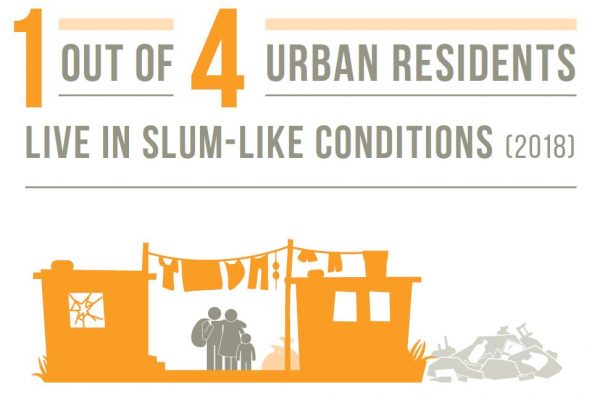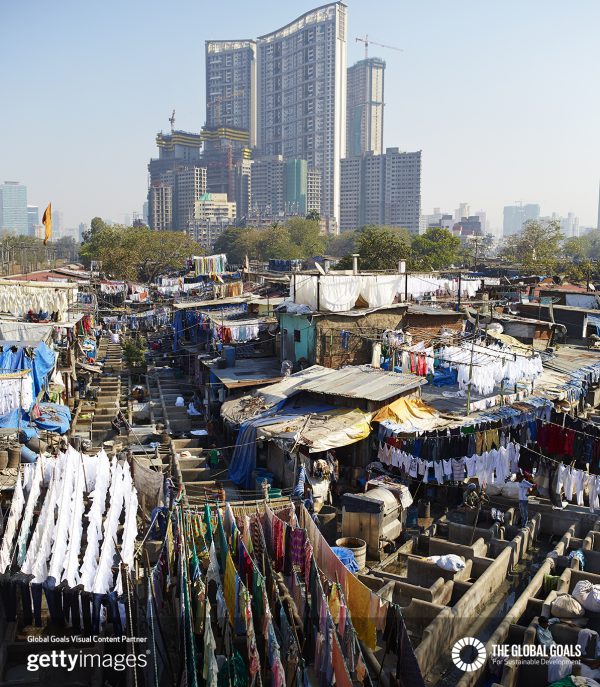The proportion of the urban population living in slums worldwide declined by 20 per cent between 2000 and 2014 (from 28 per cent to 23 per cent). That positive trend recently reversed course, and the proportion grew to 23.5 per cent in 2018. The absolute number of people living in slums or informal settlements grew to over 1 billion.
Adequate housing is a human right, and the absence of it negatively affects urban equity and inclusion, health and safety, and livelihood opportunities. Renewed policy attention and increased investments are needed to ensure affordable and adequate housing for all by 2030.



